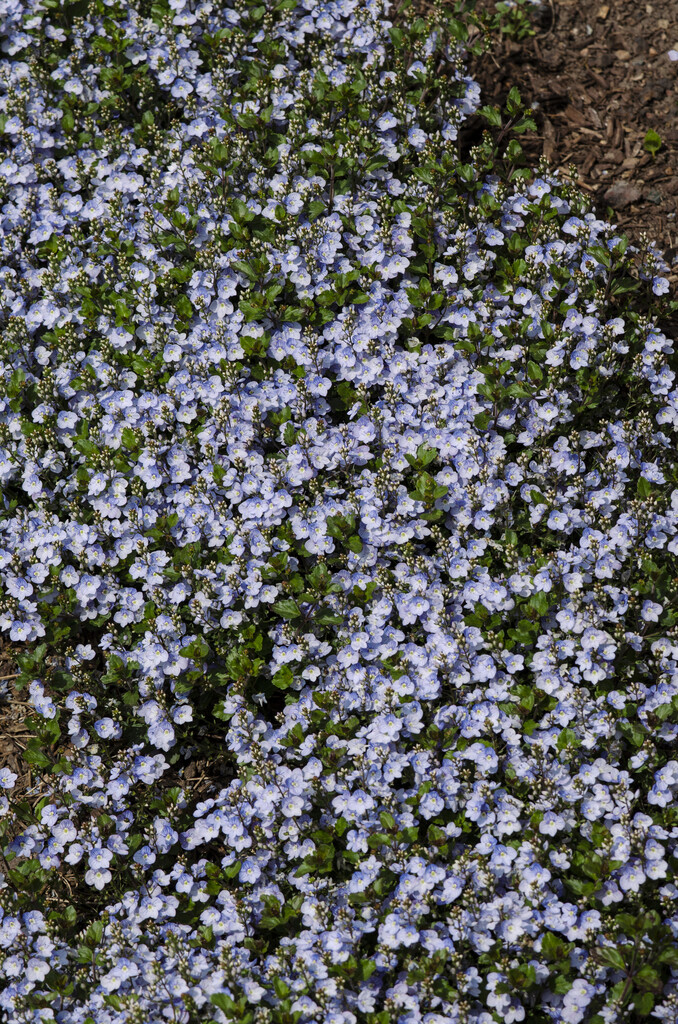Veronica 'Waterperry Blue'
creeping speedwell 'Waterperry Blue'
A low, spreading evergreen perennial, with creeping stems and small, coarsely toothed, glossy green leaves flushed with dark red. Small, pale lavender-blue flowers with darker veins are produced in late spring, sometimes with a smaller rebloom in late summer
Size
Ultimate height
0.1–0.5 metresTime to ultimate height
2–5 yearsUltimate spread
0.1–0.5 metresGrowing conditions
Moisture
Moist but well–drainedpH
Acid, Alkaline, NeutralColour & scent
| Stem | Flower | Foliage | Fruit | |
| Spring | Blue Purple | Green Red | ||
|---|---|---|---|---|
| Summer | Blue Purple | Green Red | ||
| Autumn | Green Red | |||
| Winter | Green Red |
Position
- Full sun
- Partial shade
Aspect
East–facing or South–facing or West–facing
Exposure
Exposed or Sheltered Hardiness
H7Botanical details
- Family
- Plantaginaceae
- Native to GB / Ireland
- No
- Foliage
- Evergreen
- Habit
- Matforming
- Genus
Veronica can be annuals, perennials or sub-shrubs with paired leaves and small flowers usually in terminal or axillary racemes or spikes
- Name status
Unresolved
How to grow
Cultivation
Thrives in sun or light shade, in well-drained soil that does not dry out. Will not tolerate waterlogging, protect from excess winter wet
Propagation
Propagate by division
Suggested planting locations and garden types
- City and courtyard gardens
- Cottage and informal garden
- Patio and container plants
- Rock garden
- Wildlife gardens
- Low Maintenance
- Garden edging
- Ground cover
Pruning
Rake out any brown leaves before new growth begins in spring. Can be cut back after flowering to maintain a compact shape
Pests
May be susceptible to aphids
Diseases
May be susceptible to downy mildews, powdery mildews and leaf spot
Get involved
The Royal Horticultural Society is the UK’s leading gardening charity. We aim to enrich everyone’s life through plants, and make the UK a greener and more beautiful place.
